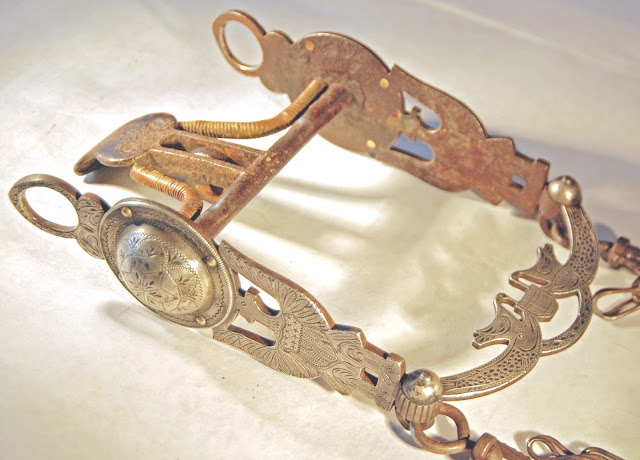Occasionally bits, spurs and saddles will show up with an extra special twist—made to order and personalized. These pieces impart the full realization of the reason for the existence of the beautiful pieces of art which we so revere: the cowboys, ranchers and Hollywood stars who ordered them. Most collectors focus on the makers and the history of the craftsmen and designs simply because there are so few custom pieces out there and such a dearth of written history on those great works. There were two ways to have an effect on the finished product when it was being ordered, customization and personalization. Keep in mind, these buyers were ordering the most expensive and best made items of the day. The price of an intricate bit from the G. S. Garcia shop in 1924 was equivalent of a month’s wages for a ranch foreman; a saddle took a long time to save up for and so did spurs. The availability of these items through mail order opened up a whole new market and allowed people from all over the world to own these objects. They were the best quality and quickly became the top status symbol. The draw to spend such an amount of money was the exquisite
Saddles could be customized by a mix and match option of fenders, tree styles, engraving and stamping patterns as well as stirrups and tapaderos—offered separately so the rider could choose which were to be used depending on whether riding in a parade or an event or simply riding the range.
The taps shown are from the 1924 G. S. Garcia catalog and are found in excellent condition on the G. S. Garcia saddle from the same time, at Pure Cowboy. Bits could be ordered with slobber bar or chain, and the style of rein chains could also be selected by the buyer.
Customization ensured the customer was getting the best match between the spur, bit or saddle and its intended use. This also allowed us to have some insight into the various preferences which were important to the people who customized their equipment. We often remark on how wonderful it would be for these items to talk. That won’t happen; but sometimes we can get the faintest of whispers from examining the personal touches of the special orders.
This article is reprinted with permission from the April 2012 issue of the Pure Cowboy Newsletter, available for download at: http://www.purecowboy.us/April%20Newsletter%202012.pdf








































